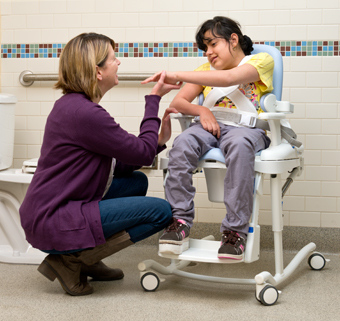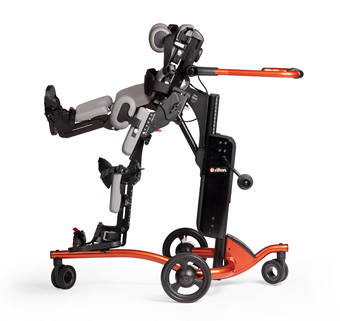Rifton Evidence Update
| July 2011Here’s a sampling of some of the articles I’ve found instructive recently. My favorite sources are: Archives of Physical Medicine and Rehabilitation, Physical Therapy Journal, Pediatric Physical Therapy Journal, American Journal of Occupational Therapy. Which sources do you rely on? If you run across articles that belong in future Evidence Updates please leave me a comment in the field below.
Muscle Strengthening in Children and Adolescents With Spastic Cerebral Palsy: Considerations for Future Resistance Training Protocols (Phys Ther 2011;91:1130-1139)
To date six systematic reviews have been published looking at resistance training for individuals with cerebral palsy. Not all these reviews concluded that resistance training for this patient group was effective, particularly the one exclusively reviewing RCTs. Impaired neural adaptations in the patient group and inconsistent protocols have been implicated in the inconsistencies of the results. Considering these contradictory findings, how should clinicians approach strength training of weak muscles in children with CP?
The authors of this perspective article analyzed the resistance training protocols from the existing RCTs in relation to the evidence-based guidelines of the National Strength and Conditioning Association (NSCA) for children with normal development. From this they compiled recommendations for resistance training for children with CP. These are as follows:
- Single joint resistance training may be more effective for children or adolescents with very weak muscles or who tend to compensate when performing multi-joint exercises, or at the beginning of training.
- Depending on the complexity of the exercise and the level of motor impairment, children and adolescents with CP may need more than one minute of rest between bouts (perhaps up to three minutes).
- Longer interventions with sufficient intensity (e.g. 12 weeks) may be needed to see significant or meaningful improvements in strength.
- Because strength training as it is traditionally done requires maximal effort and can include somewhat complicated activities, older children and adolescents (i.e. over seven years of age) are perhaps better suited to this intervention than younger children.
- Children or adolescents with more impairment also might benefit from strength training, but if it is difficult for them to contract their muscles voluntarily, methods such as electrical stimulation, mental imagery, and biofeedback could be helpful.
Effects of Weight-Bearing in Abduction and Extension on Hip Stability in Children With Cerebral Palsy (Pediatr Phys Ther 2011;23:150-157)
In this RCT, the effects of daily straddled weight-bearing on hip migration percentage (MP) and adductor muscle length in children with CP who were nonambulatory were studied over the course of a year. MP is an indicator of hip integrity. Participants stood in an adaptive stander between ½ hour and 1½ hours each day in 30 degrees of abduction. The largest decrease in hip MP was seen in children using straddled weight-bearing after surgery. And those standing for greater than an hour each day did better than those standing for only ½ hour. The authors conclude that abducted weight bearing for an hour each day may positively impact hip integrity after adductor-iliopsoas tenotomies and preserve the hip integrity and maintain muscle length in those children with CP who did not need surgery.
Current Perspectives on Motor Functioning in Infants, Children, and Adults with Autism Spectrum Disorders (Phys Ther 2011;91:1116-1126)
In this perspective article, the authors provide evidence associating the diagnosis of Autism Spectrum Disorder (ASD) with motor impairment in infancy and early childhood. As a child’s motor development advances, so do their communication/social skills. The authors implicate the existence of a developmentally important linkage between motor and social communication impairment in autism. With more evidence, motor learning principles can be applied to ASD interventions. Therapy interventions could then address gross motor and fine motor deficits, postural control, and imitation/praxis impairments as a way improve the outcome of children diagnosed with ASD.
Body-Weight-Supported Treadmill Rehabilitation after Stroke (N Engl J Med 2011;364:2026-2036)
Readers note: Although this study came out in May (and may be out-dated for some), I thought it important to include in this Evidence Update because like many of you, I have been following with interest the developments of the Locomotor Experience Applied Post Stroke (LEAPS) study over the last years.
The purpose of this RCT was to determine the effectiveness and appropriate timing of body-weight-supported treadmill training as an intervention post stroke. Four hundred and eight participants were divided into three intervention groups:
- Training on treadmill with body-weight support two months post stroke (early locomotor)
- Training on treadmill with body-weight support six months post stroke (late locomotor)
- Home exercise program managed by a PT two months post stroke
With all three interventions, clinically significant improvements in gait parameters were seen, and body weight supported treadmill training was not shown to be superior to a home exercise program managed by a PT.




